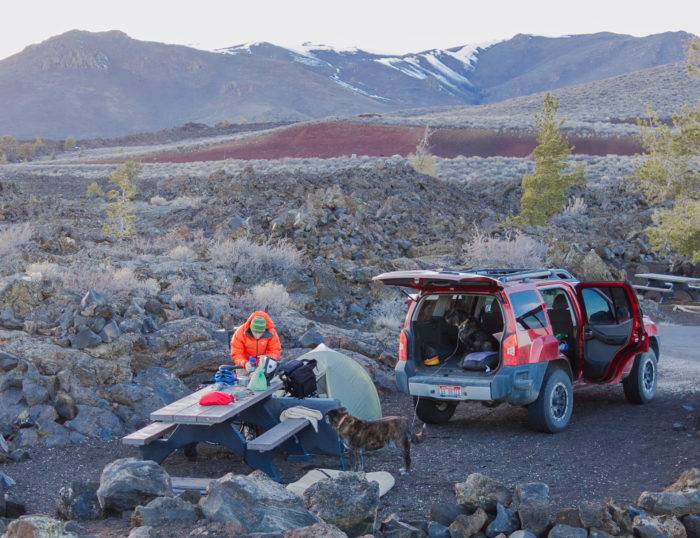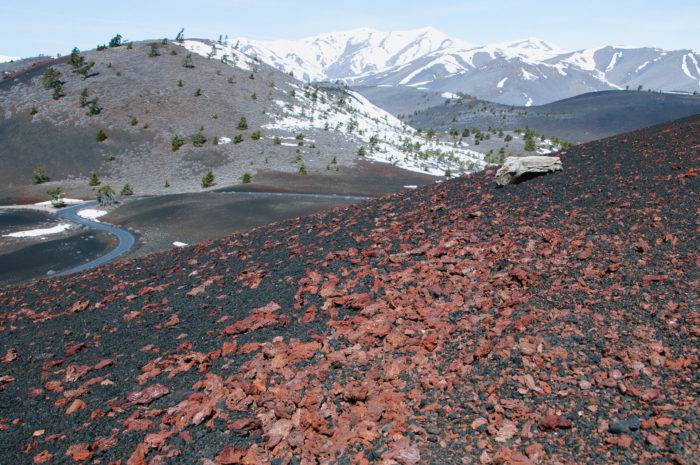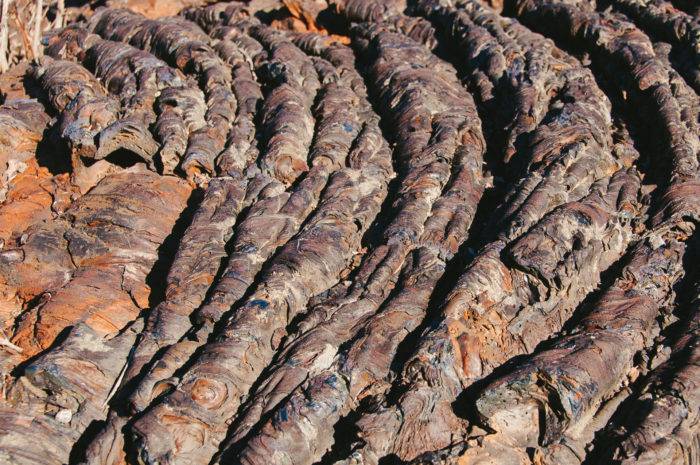On August 22, 1969, four astronauts walked the lava-covered landscape of Craters of the Moon National Monument and Preserve in Idaho. Alan Shepard, Edgar Mitchell, Joe Engle and Eugene Cernan were skilled at space flight but didn’t know which lunar rocks would be most valuable to collect on their planned journeys to the moon. Scientists picked Craters of the Moon as a training ground to educate the astronauts in the geology of volcanic formations.
The same volcanic formations that impressed the astronauts in 1969 continue to draw visitors to one of the National Park Service’s most unique national monuments. Here’s how to make the most of a long weekend at Craters of the Moon.
Getting There
Craters of the Moon National Monument is located along U.S. Route 20 between Arco and Carey. The entrance to the park is 1.5 hours from Twin Falls, Idaho Falls and the resort town of Sun Valley.
Day 1: A Night Under the Stars

Evening: Travel to Craters of the Moon and snag a campsite at the renovated Lava Flow Campground. The Lava Flow Campground has 42 first-come, first-serve campsites for tents and small RV’s. Come prepared to camp off-the-grid (there are no hookups for RV’s, and the nearest fully-stocked grocery store is 50 minutes away), though there are bathrooms and charcoal grills available.
If camping isn’t your style, check out the Silver Creek Motel in Bellevue (50 minutes from the park), or one of the many Airbnb’s in Picabo (35 minutes from the park). No matter where you stay, be sure to hang around long enough to see the stars appear in the ultra-dark sky over Craters of the Moon.
Day 2: Lava Adventures

Morning: Get ready for a day of adventure by brewing a cup of coffee or tea as the sun rises over Big Southern Butte. After breakfast at your campsite, stop by the visitor center, which is open from 8:00 a.m. to 6:00 p.m. during the summer season. Learn about the volcanic hotspot that moved across southern Idaho, creating the Snake River Plain and eventually coming to rest under present-day Yellowstone National Park. Be sure to grab a caving permit from the ranger on duty. You’re going to need it!
The park is best explored by car or bicycle. Pack a lunch before you head out, and make your first stop the North Crater Flow Trail for a lesson in lava formations.

Afternoon: After lunch at one of the park’s well-placed picnic tables, take a hike up Inferno Cone. This once-active cinder cone is otherworldly to explore. A short but steep climb leads to panoramic views of the Pioneer Mountains and the park’s 1,117 square miles of lava and sagebrush steppe.
Make a quick stop at the castle-like formations of Spatter Cone before heading to the park’s five caves. A permit is required to visit the caves, which can be obtained at the visitor center. Walk the flat, paved trail to see Boy Scout Cave and Beauty Cave before making your way to Indian Tunnel.

Indian Tunnel is reached via a sturdy set of metal stairs descending into the partially collapsed cave. Even those with a fear of enclosed spaces can enjoy the beginning of Indian Tunnel, which is grandiose in size and open to the elements. Those feeling brave can venture deeper into the cave by picking their way over the path of lava. Remember to bring a flashlight to light the way. Indian Tunnel narrows, requiring a moderate amount of scrambling to climb out a gap in the ceiling on the far end.
Evening: Return to your campsite and watch the sunset turn the lava shades of blue and purple. While no fires are allowed, the campground’s charcoal grills are perfect for cooking dinner and roasting marshmallows for s’mores.
Day 3: Go Atomic
Morning: The small town of Arco, a quick 20-minute drive from Craters of the Moon, was the first city to be lit by atomic power. After World War II a group of nuclear scientists in Chicago turned their attention away from weaponry and toward the generation of power. Experimental Breeder Reactor 1 (EBR-1), a National Historic Landmark is open for tours from Memorial Day to Labor Day. While there, climb on top of the (now defunct) nuclear reactor, duck into the thick-walled hot cell, and see where the spent rods were cleaned and stored.
Afternoon: Make a stop at Pickle’s Place in Arco, a local favorite for fried pickles and hamburgers. Outside, a cliff that dominates the view is painted with years, representing every graduating class since 1920 from the local high school.
With a full stomach and plenty of new memories, hop on U.S. Route 20 and travel home, or continue on to your next Idaho destination.
Sara Sheehy is a writer and photographer who travels the world seeking wild places and great stories. When she’s not on the road, Sara spends her time exploring the mountains.
Feature image credited to Visit Idaho.
Published on March 5, 2019

